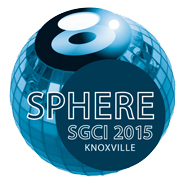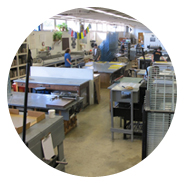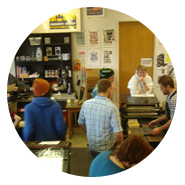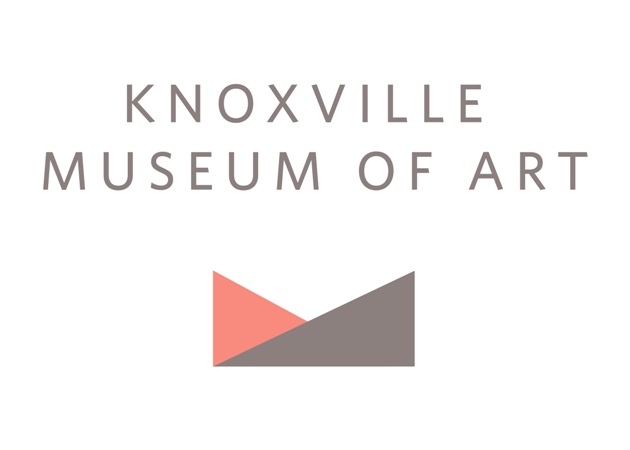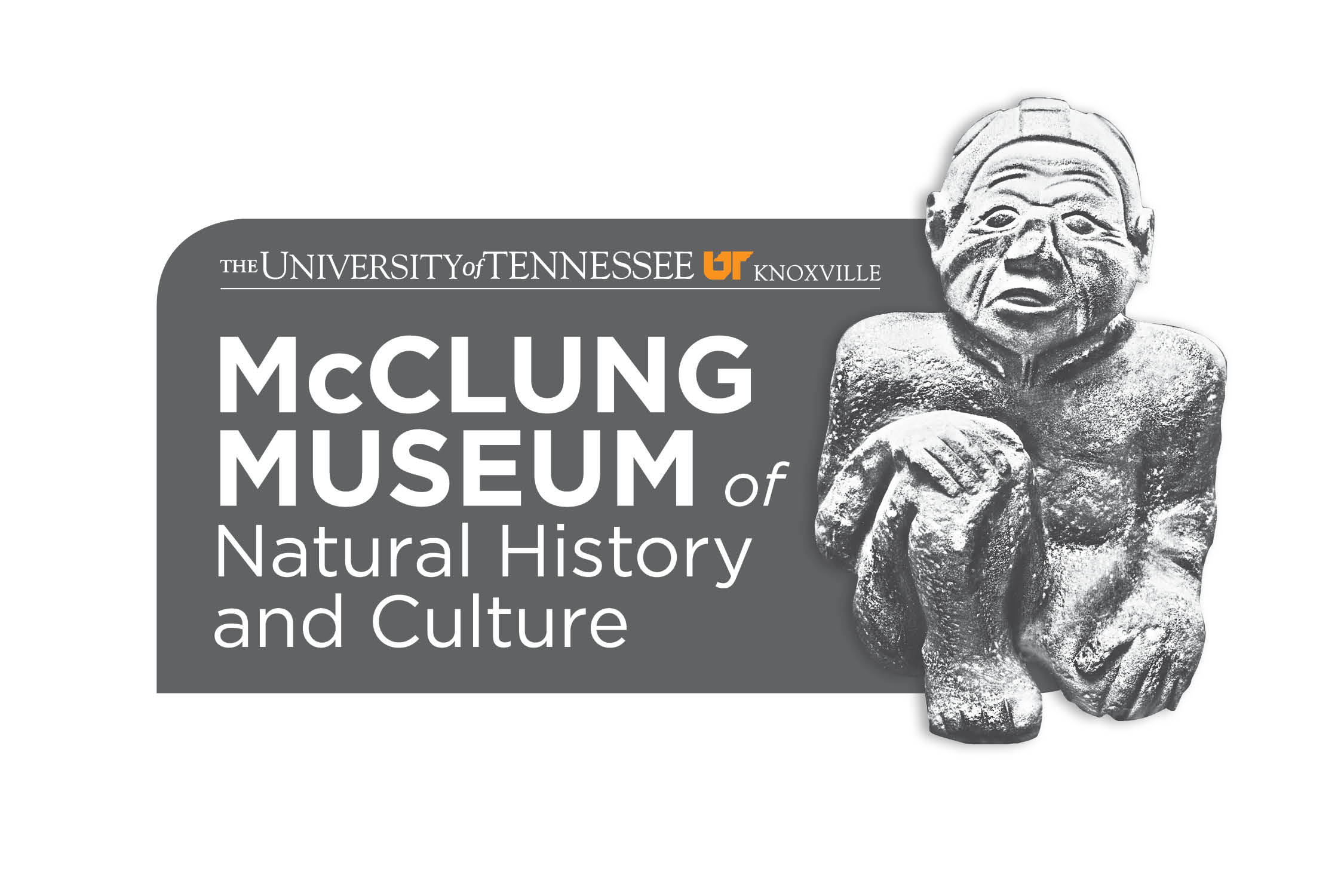fEatured Exhibition
SGCI Members' Traveling exhibition
Reception: Thursday, March 19, Emporium Gallery, 6pm-9pm

President's Statement
If Words Could Speak by David Jones
After looking at images of the SGC International Annual Exhibition, I feel compelled to congratulate Ms. Weisberg on her choices made for this exhibition. Not to second guess or function as an armchair critic, the kudos comes by way of her seasoned and disciplined vision. Judging exhibitions is tough work and after looking at hundreds of images it is sometimes difficult to extract a thread that will create cohesiveness from the selections. Rather than exhibiting a homogenized sameness, the images share visual connections. Each image is born out the unique and personal vision of each artist. And, as with any exhibit, you will find yourself attracted to particular pieces because of what you think about, what you see, what ancillary associations, recollections, and memories spring to mind while looking. What is it that you see? The SGC International Member’s Traveling Exhibition has been an integral part of the conference experience for a number of years. After the exhibition ends its run at the hosting venue, it is available for travel to other locations, and eventually to other cities in other parts of the world. This exhibition becomes a well-suited ambassador for what is taking place in contemporary print today. What I find refreshing about the work in this installment is that I am compelled to reflect more about what a piece says or evokes rather than how it was made. And really isn’t this the point? What do the prints tell us about the artist, about the idea, about the themes the individual cares to articulate through a given process? As a printmaker, I have often fallen into the trap of guessing how an image was made, or marvelling at a particular process, and not looking at the piece on the merits what is being conveyed. Themes range from fanciful dreams, ecological meltdown, self-portraits, to visual constructions of multiple layers built into a harmonious whole that guide the eye, while simultaneously telling a story. Images are about the mysteries, shadows and reflections bubbling forth from the subconscious or through observation, ideas made manifest on materials such as wood, paper, metal, or stone. Whether or not you are an artist who makes prints, I welcome you to this exhibition. I think you will be intrigued, challenged, and delighted by the images selected by Ruth Weisberg. If you are familiar with prints and or work in other media, I challenge you to look at the work for its evocative nature and the visual narratives presented. There will be images you will understand immediately—but wait, listen for the voice, and listen for the sound of words speaking through these images. It is my hope this exhibition will inspire you to look at your own creative impulses and celebrate the myriad mysteries these artists have dared to call forth, capturing moments through process, the visual residue of an experience. And that during reflection, recollections of what you saw will revisit you. Thanks for looking and seeing. David Jones President SGC International
Juror's Statment
The Snapshot and the Enduring Image by Ruth Weisberg
Jurying a national print show, especially one as representative of printmaking activity across the United States as the Southern Graphic Council International’s Annual Exhibition, offers two illuminating possibilities. The first is the hope for a snapshot of the most current preoccupations and stylistic approaches at this moment in time. At the same time there is a desire to grasp the deep continuities with American printmaking over the last fifty or more years. I am convinced that both are possible—the snapshot and the enduring image. In terms of recurring imagery, I was struck by how certain subjects were evoked again and again. When I look at the work of Art Werger, I see very knowing references to the prints of Martin Lewis or the crowd scenes of Paul Cadmus. DeAnn Prosia’s etching ‘Harlem: 125th Street’ also suggests the New York street scenes of Martin Lewis. Another urban encounter, ‘Two Ships’ by Joshua Watts, has the haunting presence of a noir detective story. Portraits are a recurring theme both here and over centuries of printmaking. The searching and resonant portraits of Ann Johnston-Schuster use a language of exquisite mark making unusual in a woodcut to construct images of human vulnerability. Caroline Thorington envisions herself in the deeply familiar space of the artist’s cluttered studio. The self-portrait of the artist drawing on a litho stone is echoed by the image on that stone. There is more then a hint of infinite regression here. In ‘Tarnish’ Grace Sippy lures us into a hallucinatory space but the subject herself seems to have slipped away. If any 20th C. style seems to persist it is Surrealism. The monoprint ‘Golden Hours’ by Alan Singer, seems more visionary then any observed landscape. Alan Larkin evokes the magical world of the marionette… human but not quite, which reminds one of Freud’s definition of the ‘uncanny’. Dennis Olsen’s ‘Malocchio’ suggests the parallel reality of the puppet, and both the cruel and comic aspects of a ‘Punch and Judy’ show. I was struck by how many artists used imagery involving animals that were also somehow surreal. They are at once familiar and profoundly strange. Beauvais Lyons’ ‘Nordic Hare Falcon’ imagines an implausible bird/mammal hybrid and gives it the authority of an Audubon illustration. ‘Wolf Watching’ by Debilynn Fendley has the charm and the menace of a Grimm’s fairy tale. While specific themes unite many works in this exhibition, each print demonstrates in quite a distinctive way the individual artist’s connections and insights that come from their mastery of craft, the history of art and their unique sources of inspiration. I wish I could comment on each and every print. The visual strategy that seems more newly minted and pervades a significant portion of the exhibition is the recognizable image or object caught in a maelstrom of textures. Several examples spring to mind such as ‘Lift Off’ by Mark Bovey, ‘MirrorMirror 2’ by Stacy Elko or ‘Dreams of the Sea’ by Ralph Steeds. The process of printmaking lends itself to this successive layering. It seems like a very natural way for a printmaker to build an all encompassing image. Artists have ever more freedom to mix and match images from very diverse sources. And more than previously, different techniques can come together in surprising combinations, but of course, sometimes this works and sometimes it doesn’t. Novel combinations of technique do not in themselves guarantee a successful print. What does? With the current vast range of techniques and imagery available to artists it is impossible and probably not even desirable to come down to a specific formula for an effective print — instead I am going to try to describe some fundamental commonalities among the prints that I find compelling. I think all successful prints retain some aura of printmaking facture; some evocation of that special visual quality, be it a sedimentary pool of litho wash, the very physical gouge in a woodcut, or the incisiveness of the etched line. All of these graphic qualities serve to distinguish prints from the slippery or roughly brushed surface of a painting. We embrace our difference and our history even as we complicate it, or mix it up as never before. So it is the ‘printmakerly’ that appeals — to coin a phrase. The other aspect I always search for and hope to find has to do with passion, and the desire to create meaning. The images chosen, the juxtapositions, and evocations are not just casual or uncaring choices. Something is being owned, and something is being defined, be it about being human — or even, as we have seen, about not being human. So in the end it is some manifestation of the printmaker’s skill, imagination and obsession that leads to the intrigue and visual seduction of the printed image.
